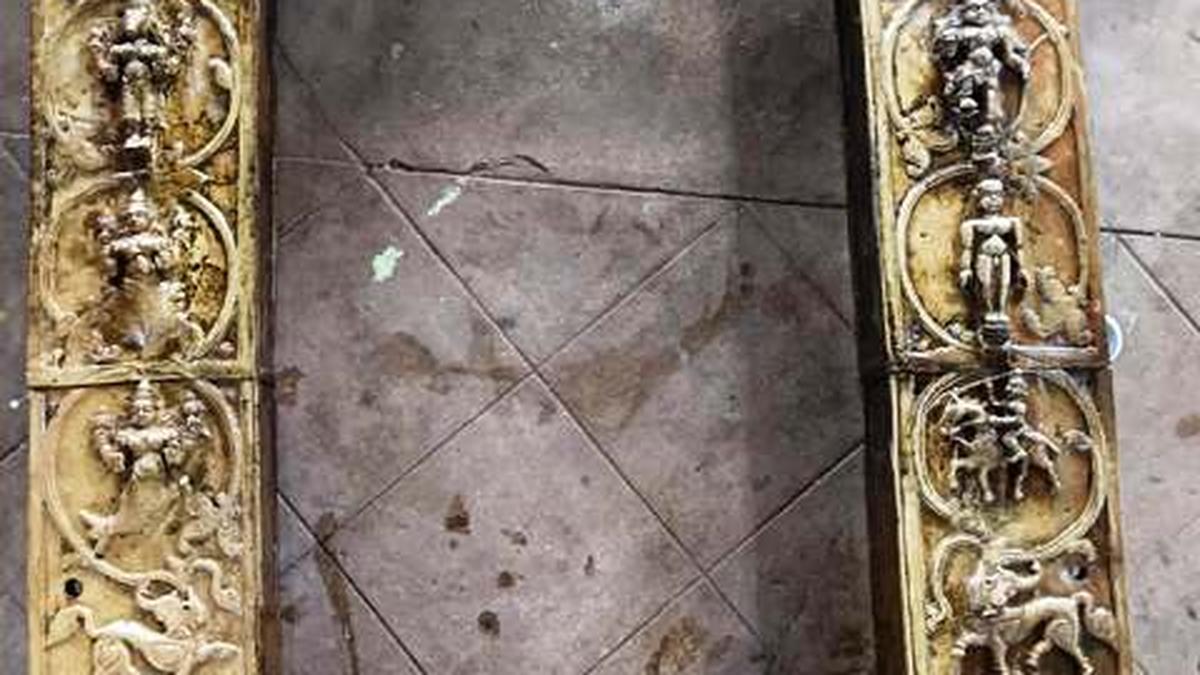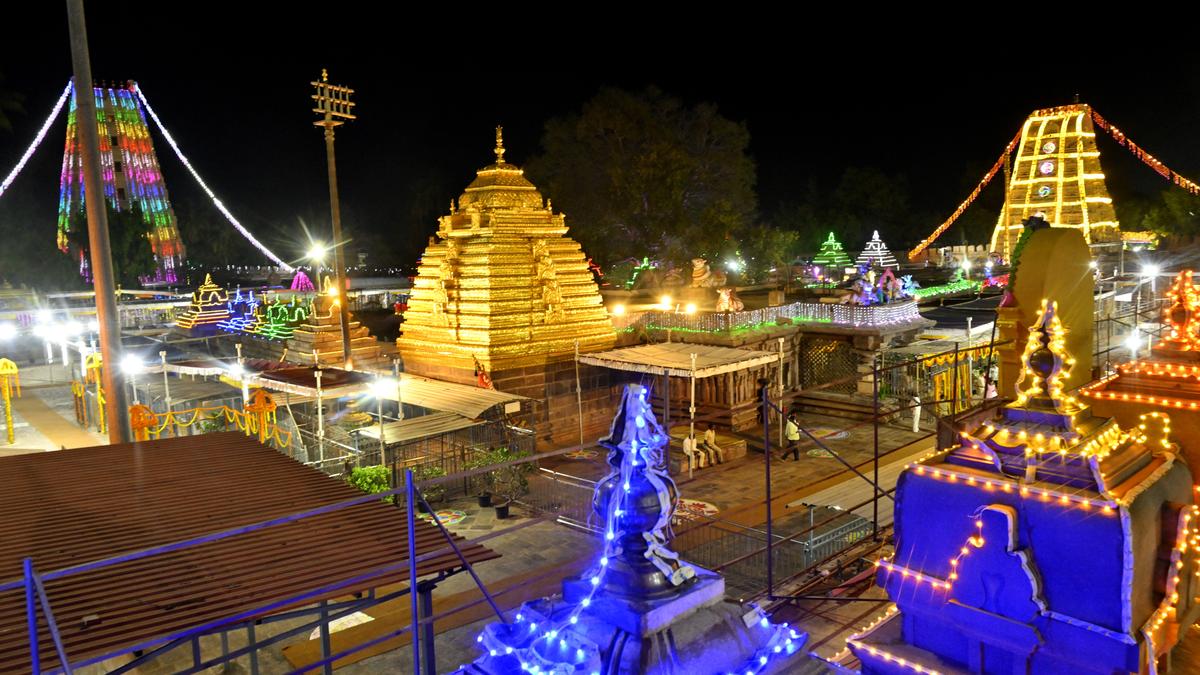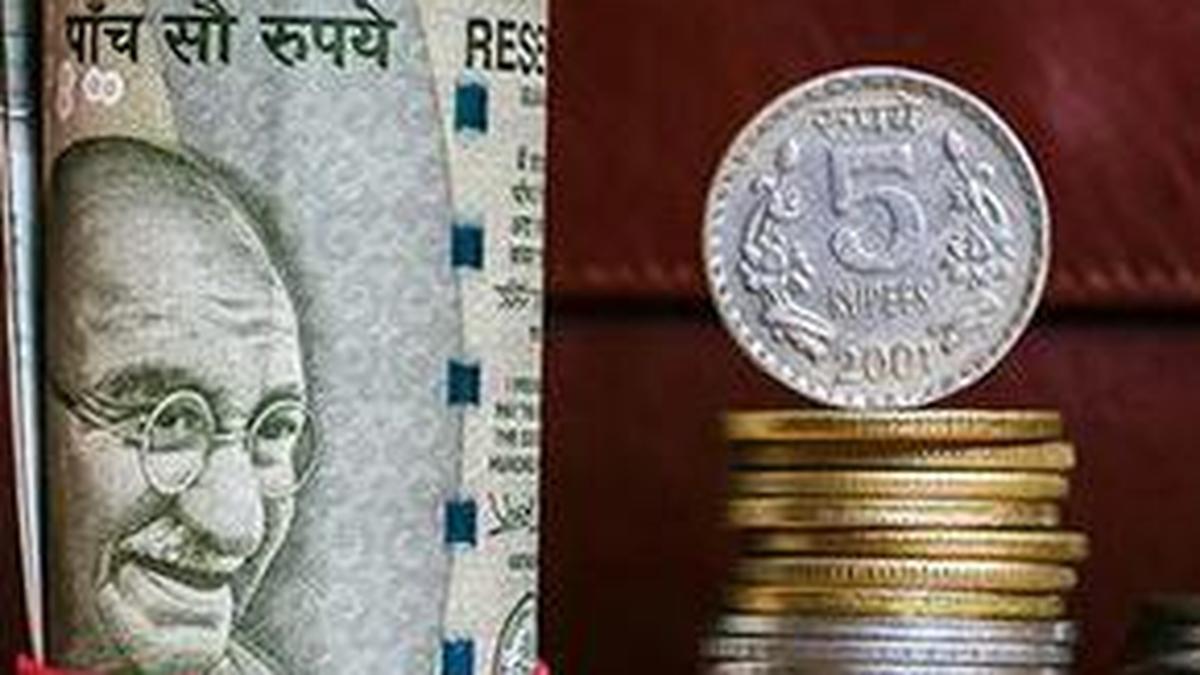
A metallic door frame believed to be of Vijayanagar period and having the sculptures of 10 incarnations (dasavatara) of Lord Vishnu was discovered in the Anantapadmanabha temple at Perdoor in Udupi district of Karnataka.
| Photo Credit: Special Arrangement
A metallic door frame believed to be of Vijayanagar period and having the sculptures of 10 incarnations (dasavatara) of Lord Vishnu was discovered in the Anantapadmanabha temple at Perdoor in Udupi district of Karnataka.
On July 4, T. Murugeshi, a retired Associate Professor in ancient history and archaeology, Mulki Sunder Ram Shetty College, Shirva, Udupi district said that Anantapadmanabha is a very famous god in the Bhagavata cult in the west coast of India.
The door frame is about 4.5 feet in height and 3.5 feet in width.
From the bottom of the right side of the door frame, Lord Hanuman is depicted standing offering a salute. Above him is a mythical animal vyali, and on top of it is mathsya (fish), the first incarnation of Lord Vishnu. Next above is seen Kurma as turtle, Varaha as pig, and Vamana avatar, he said.
At the centre of the door frame, Gajalakshmi is seated along with two elephants. Gajalakshmi is seen seated on a high platform in Abhaya and Varada mudra. The two elephants on either side are showering sacred water on her. The Sun and Moon are seen above the elephants.
On the left side top of the door frame is Parashurama. Below is Rama, and Kalingamardhana Krishna, Buddha standing in naked form, and last is Kalki.
After the 10 incarnations, Garuda is shown standing offering salutation, at the bottom of the left side.
Historical importance
Mr. Murugeshi, who is also the founder trustee of Adima Kala Trust (R.), Udupi, said that an epigraph located in the inner enclosure of the temple belongs to the reign of Krishnadevaraya, an emperor of Vijayanagar. He lavishly donated to the temple and appointed an officer Surappayya to look after the administration of the temple in 1,519 A.D. It was during his tenure that the whole temple was renovated in stone. The dasavatara door frame was probably made during the same period.
“Emperor Krishnadevaraya conducted the successful expeditions on the Gajapatis of Odisha and brought the cheese ball Krishna as his war trophy to the capital. He built a magnificent temple for Krishna in the capital Hampi, and later worshipping cheese ball Krishna became widespread in the empire,” he said.
“In the door frame discovered at the temple, cheese ball Krishna is shown as the eighth incarnation to support our view that it was the creation of the Vijayanagar period,” the historian said.
“Standing Buddha in naked form is also quite interesting. Similar sculpture is found on Vidyashankara temple at Sringeri. The sculptural styles are in Vijayanagar style,” Mr. Murugeshi said.
The historian thanked Pramod Rai Palaje, president, and Gururaj, administrator of the temple management committee, and all trustees and team of archakas of the temple for their support in the research.
He also thanked research team members of Adima Kala Trust Shreyas Kolpe, Shreyas Bantakal, Gowtham Belman, Ravindra Kushwa, Shirva, Dhanush and Keerthan Udupi for their cooperation.
Published – July 04, 2025 03:03 pm IST



